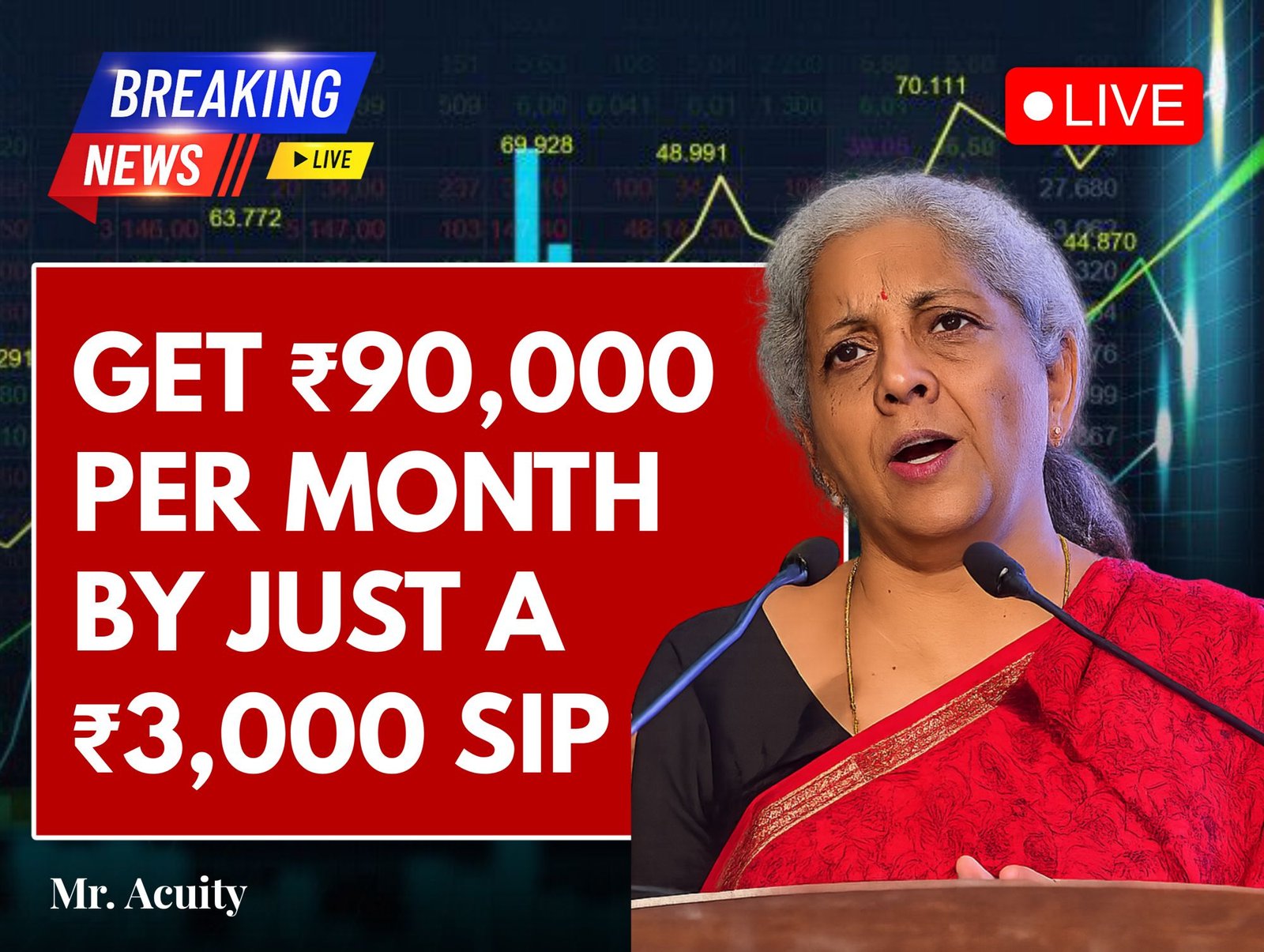Table of Contents
Get ₹90,000 Monthly with Just a ₹3,000 SIP | 2025-26
What if a small ₹3,000 SIP could secure you a steady ₹90,000 every month in the future? With the right step-up strategy and the magic of compounding, this is possible. In this blog, we’ll walk through a simple, real-world example showing how consistent SIPs can grow into a powerful income stream using SWP (Systematic Withdrawal Plan).
Top 10 Mutual Funds with Over 15% CAGR (Last 10 Years)
The table below shows funds and their 10-year CAGR — factual performance figures to give readers confidence in the example that follows. (Past performance is not a guarantee of future returns.)
| Fund Name | 10-Year CAGR Return |
|---|---|
| Nippon India Small Cap Fund | 24.70% |
| SBI Small Cap Fund | 23.82% |
| Quant ELSS Tax Saver Fund | 19.88% |
| Quant Small Cap Fund | 17.42% |
| Motilal Oswal Mid Cap Fund | 23.00% |
| HSBC Small Cap Fund | 19.86% |
| Axis Small Cap Fund | 23.26% |
| Kotak Emerging Equity Fund | 19.97% |
| Kotak Small Cap Fund | 19.39% |
| Edelweiss Mid Cap Fund | 21.53% |
Illustration: How a ₹3,000 SIP Can Give You ₹90,000/Month Later
This is an illustrative example (numbers changed from the original image). It explains the method and shows how the table above supports the expected long-term returns.
Assumptions
- Monthly SIP: ₹3,000
- Annual Step-Up: 15% increase each year
- Investment Period: 20 years
- Average Long-Term Return Used (for projection): ~16% per year
Result (Illustrative)
- Total money you invested: ~₹22,00,000
- Projected corpus after 20 years: ~₹1,35,00,000
Converting the Corpus into Monthly Income (SWP)
Set up a Systematic Withdrawal Plan (SWP) after year 20:
Corpus available: ₹1.35 crore
Monthly withdrawal: ₹90,000
Withdrawal period: 20 years
Over 20 years you will withdraw about ₹2.16 crore (₹90,000 × 12 × 20). Because the remaining corpus continues to earn returns, you can still retain and grow a significant balance while taking this monthly income.
Practical Steps to Start
- Choose one or more funds from the factual table above (diversify: small-cap + mid-cap + ELSS if suitable).
- Open a SIP of ₹3,000 per month and enable annual step-up of 15% (available in most platforms).
- Stay invested for at least 15–20 years; avoid stopping during market volatility.
- After 20 years, move to SWP mode and withdraw the monthly income you need (e.g., ₹90,000).
- Consult a certified financial planner or tax advisor for fund selection and tax planning.
Important Notes & Cautions
- Table values are factual 10-year CAGRs (source: fund reports) but past returns don’t guarantee future performance.
- Illustration uses assumed average returns for projection. Real outcomes will vary with market returns and fund choices.
- Tax, fund expense ratios, and withdrawal timing affect net returns — consider these with your advisor.
Disclaimer: The fund table lists historical 10-year CAGR values. The SIP & SWP example is illustrative and uses changed values for demonstration only. Always seek personalised financial advice before investing.
FAQs on ₹3,000 SIP & Monthly Income
Can a ₹3,000 SIP really grow into ₹90,000 per month?
Yes. With annual step-ups and compounding, a disciplined ₹3,000 SIP over 20 years can build a corpus of ~₹1.35 crore. Through an SWP, this corpus can generate around ₹90,000 per month for 20 years, while still keeping part of your money invested.
What’s the difference between SIP and SWP?
SIP (Systematic Investment Plan) means investing a fixed amount every month to grow wealth. SWP (Systematic Withdrawal Plan) is the reverse — withdrawing a fixed amount monthly, turning your investment into regular income.
Which mutual funds work best for long-term SIPs?
Historically, small-cap, mid-cap, and ELSS funds have delivered strong returns for long-term SIPs. Your choice depends on risk appetite and goals. The table above shows 10 funds with 15%+ CAGR over the past decade.
Is SIP a safe choice for beginners?
SIP is beginner-friendly because it averages out market ups and downs over time. While returns are not guaranteed, SIP reduces the risk of timing the market and builds discipline.
What if I stop my SIP before 20 years?
Your invested money will remain in the mutual fund until you redeem it, but you’ll miss the compounding benefit. To achieve results like the ₹90,000 monthly example, staying consistent for the full duration is key.
Additional Resources: Power of Compounding
Explore More Content on Finance by Mr. Acuity.





